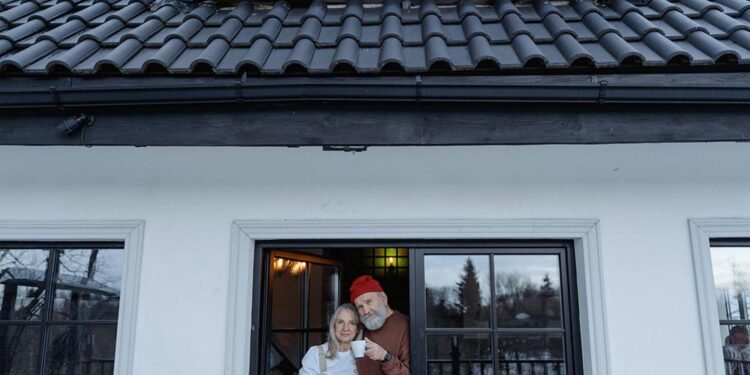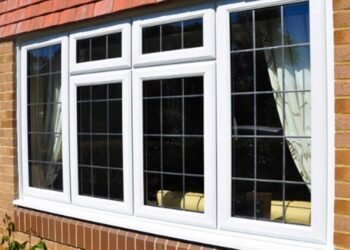As we grow older, our needs change, and so do the needs of our homes. Aging in place is a popular concept that allows seniors to live independently in their own homes for as long as possible. It’s all about making simple but effective modifications that ensure safety and comfort.
In this article, we’ll explore various home improvements that can make a significant difference for seniors who want to age in place gracefully and securely.
Assessing Your Home for Safety and Comfort
Before diving into specific improvements, it’s crucial to evaluate the current state of your home. Start by walking through each room and identifying areas that could pose potential hazards. Key areas to focus on include entryways, kitchens, bathrooms, and living spaces. Look for things like loose rugs, cluttered pathways, and poorly lit areas. It’s also helpful to think about daily routines and how they might change as mobility decreases.
Bathroom Modifications for Enhanced Safety
The bathroom is one of the most critical areas for safety improvements due to its high risk of slips and falls. There are several easy-to-implement changes that can make a big difference.
First, consider adding grab bars near the toilet and in the shower or bathtub. These provide much-needed support and stability. Non-slip mats or adhesive strips in the shower and on the bathroom floor can also prevent slips. Improved lighting is essential; make sure the bathroom is well-lit, especially around the shower, toilet, and vanity.
A significant upgrade that can greatly enhance bathroom safety and comfort is a bath tub remodel. These tubs remove the need to climb over a high tub edge, thereby reducing the risk of falls. Typically, walk-in tubs feature built-in seating and handrails, which add to the overall safety and ease of use.
Kitchen Updates to Ensure Safety and Convenience
The kitchen is another area where modifications can significantly improve safety and convenience for seniors. Common kitchen hazards include hard-to-reach items, slippery floors, and the risk of burns or cuts.
Start by organizing the kitchen to keep frequently used items within easy reach. This reduces the need for seniors to stretch or climb to access what they need. Installing pull-out shelves in cabinets can make it easier to find and reach items stored in the back. Lever-style faucets are easier to use than traditional knobs, and they can be adjusted with a gentle push or pull, which is particularly beneficial for those with arthritis.
Another useful improvement is lowering countertops to accommodate those who may need to use a wheelchair or walker. Ensure that all appliances are in good working order and consider replacing old ones with models that have safety features, such as automatic shut-off. Adding a non-slip mat in front of the sink and stove can help prevent falls.
Living Room and Bedroom Changes for Comfort
Creating a comfortable and accessible living space is essential for seniors aging in place. The living room and bedroom should be arranged to allow for easy movement and to reduce the risk of falls.
In the living room, arrange furniture in a way that creates clear pathways. Avoid using too many small tables or decorative items that can be tripped over. Consider replacing low or overly soft furniture with firmer, higher pieces that are easier to get in and out of. Recliners or lift chairs can be especially helpful for those who have difficulty standing up from a seated position.
In the bedroom, ensure that the bed is at a comfortable height. Adjustable beds can be a great investment as they allow seniors to find the most comfortable position for sleeping or relaxing. Place a sturdy nightstand within easy reach of the bed, and use nightlights to illuminate the path to the bathroom.
Improving Home Lighting for Better Visibility
Proper lighting is crucial in preventing accidents and improving overall comfort for seniors. Poor lighting can make it difficult to see obstacles and navigate the home safely.
Install bright, energy-efficient lighting in key areas, such as hallways, staircases, and entryways. Consider using LED bulbs, which are long-lasting and provide excellent illumination. Motion-sensor lights are a convenient option for hallways and bathrooms, as they turn on automatically when movement is detected, reducing the need to fumble for a light switch in the dark.
In the kitchen and living areas, task lighting can help illuminate specific areas where activities like reading, cooking, or sewing take place. Ensure that all light switches are easily accessible, and consider installing rocker switches, which are easier to use than traditional toggle switches.
Entryway Adjustments for Easy Access
Safe and accessible entryways are vital for seniors aging in place. The entryway is the first point of contact with the home and should be designed to accommodate any mobility issues.
Start by ensuring that the path to the entrance is clear and well-lit. Adding ramps or handrails can make it easier for those using wheelchairs, walkers, or canes to enter and exit the home safely. Non-slip flooring is essential, especially in areas that may get wet from rain or snow.
A covered entryway can provide protection from the elements, making it safer and more comfortable to come and go during inclement weather. If the entryway has steps, consider installing a ramp or a stair lift to provide easier access.
Smart Home Technology for Senior Safety
Smart home technology can play a significant role in improving safety and convenience for seniors. These devices are designed to be user-friendly and can provide an added layer of security and comfort.
Smart doorbells with video capabilities allow seniors to see who is at the door without having to open it. Medical alert systems can be life-saving, providing immediate assistance in case of an emergency. Smart lighting systems that can be controlled via smartphone or voice command add convenience and safety, especially for those with limited mobility.
Conclusion
Making home improvements for aging in place is essential for ensuring the safety and comfort of seniors. By assessing the home and making strategic modifications, you can create an environment that supports independent living. From bathroom remodels and kitchen updates to smart home technology, these changes can significantly enhance the quality of life for seniors.
Taking these steps today can make a world of difference, allowing you or your loved ones to age in place with dignity and ease.












